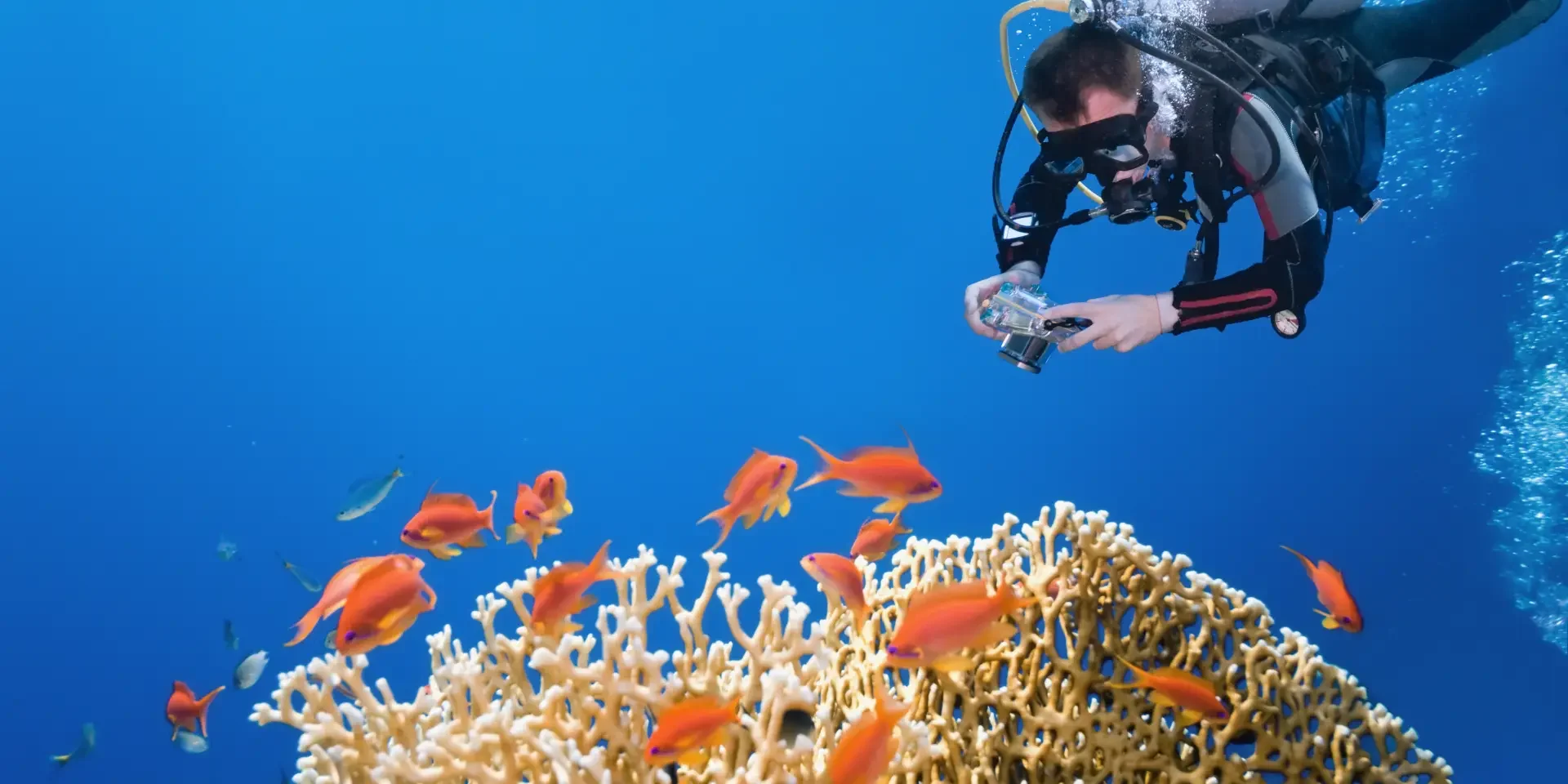Underwater Photography Tips for Capturing the Beauty of the Red Sea
The Red Sea is one of the most stunning underwater photography destinations in the world. With its clear waters, colorful coral reefs, and incredible marine biodiversity, it offers endless opportunities for breathtaking shots. Whether you’re new to underwater photography or looking to improve your skills, these expert tips from scubadore hurghada will help you take stunning images of the Red Sea’s underwater world.
1. Choose the Right Underwater Camera Gear
Your choice of camera will significantly impact your underwater photography experience. Options range from compact waterproof cameras to professional DSLR and mirrorless systems with underwater housings.
Best Camera Options for Underwater Photography:
- Compact Cameras: Ideal for beginners (e.g., Olympus TG-6, SeaLife DC2000).
- Mirrorless and DSLR Cameras: Offer higher image quality, but require underwater housings and strobes (e.g., Sony A7R series, Canon EOS R5).
- Action Cameras (e.g., GoPro Hero 11): Great for wide-angle shots and videos but limited for detailed macro photography.
No matter which camera you choose, make sure it has manual white balance settings to compensate for color loss underwater.
2. Master Your Buoyancy Control
Good buoyancy is crucial for capturing clear and stable images. Uncontrolled movement can stir up sand, scare away marine life, or even damage coral reefs.
Tips to Improve Buoyancy for Photography:
- Take a Peak Performance Buoyancy course with scubadore hurghada to refine your control.
- Use slow, controlled movements to approach subjects without disturbing the environment.
- Adjust your breathing to fine-tune your depth instead of using your fins excessively.
3. Understand Underwater Lighting
Water absorbs light, which results in loss of colors, particularly reds and yellows, as you go deeper. To restore natural colors and add contrast, consider using external lighting.
Best Lighting Techniques:
- Use a strobe or underwater flash to bring out vibrant colors in corals and marine life.
- For compact cameras, use a red filter to counteract blue/green tones.
- Position strobes at a 45-degree angle to avoid backscatter (floating particles reflecting light).
If natural light is your only option, shoot upwards toward the sun to make use of available light.
4. Get Close to Your Subject
Water reduces contrast and sharpness, so the closer you are to your subject, the better the image quality.
Best Practices for Close-Up Photography:
- Get within one meter of your subject whenever possible.
- Use macro mode for photographing small creatures like nudibranchs and shrimp.
- Avoid using digital zoom—move closer instead for clearer shots.
5. Use the Right Camera Settings
Different conditions require different camera settings, so learning to adjust manually is key to great underwater shots.
Recommended Camera Settings:
- ISO: Start with 100-400 for clear images with minimal noise.
- Aperture: Use f/8 to f/16 for wide-angle shots to keep everything in focus.
- Shutter Speed: 1/125 sec or faster to freeze motion.
- White Balance: Manually adjust or use the camera’s underwater mode for better color correction.
6. Composition Techniques for Stunning Shots
A well-composed image makes all the difference. Use these techniques to create more visually appealing underwater photos.
Key Composition Rules:
- Rule of Thirds: Place your subject slightly off-center for a balanced image.
- Eye Contact: Capture eye contact from fish or marine creatures for a more engaging photo.
- Frame with Coral or Rocks: Use natural elements to create depth and perspective.
- Negative Space: Leave open blue water around your subject to highlight its presence.
7. Be Patient and Respect Marine Life
Underwater photography isn’t just about capturing great shots—it’s about respecting the ocean. Avoid touching marine life, disturbing the reef, or chasing fast-moving creatures.
Ethical Photography Guidelines:
- Observe marine animals without altering their behavior.
- Avoid excessive flash when photographing light-sensitive creatures like seahorses and frogfish.
- Never rest your camera or equipment on coral.
At scubadore hurghada, we promote eco-friendly diving and responsible underwater photography.
8. Best Dive Sites for Underwater Photography in Hurghada
Fanadir North and South
- Best for: Wide-angle reef shots, schools of fish, and vibrant coral gardens.
Gota Abu Ramada (The Aquarium)
- Best for: Colorful fish life, blue-spotted stingrays, and Napoleon wrasse.
Small Giftun
- Best for: Dramatic reefscapes, gorgonian corals, and occasional turtle encounters.
El Mina Wreck
- Best for: Wreck photography, wide-angle shots, and macro opportunities.
Fanous West and East
- Best for: Dolphin encounters and unique topography.
9. Editing and Post-Processing
Even with the best camera and lighting, post-processing can enhance your images significantly.
Editing Tips:
- Use Adobe Lightroom or Photoshop to adjust colors and contrast.
- Correct the white balance to remove excessive blue/green hues.
- Sharpen details and reduce noise for clearer images.
- Remove backscatter (floating particles) using spot-removal tools.
Capture the Red Sea’s Beauty with scubadore hurghada
With its crystal-clear waters and abundant marine life, Hurghada offers endless opportunities for underwater photography. Whether you’re capturing the hypnotic dance of a Spanish Dancer, the vibrant hues of a Napoleon wrasse, or the eerie beauty of a sunken wreck, scubadore hurghada provides expert-guided dives to help you get the perfect shot.
Ready to take your underwater photography to the next level? Book a dive with us today and start capturing the magic of the Red Sea!







